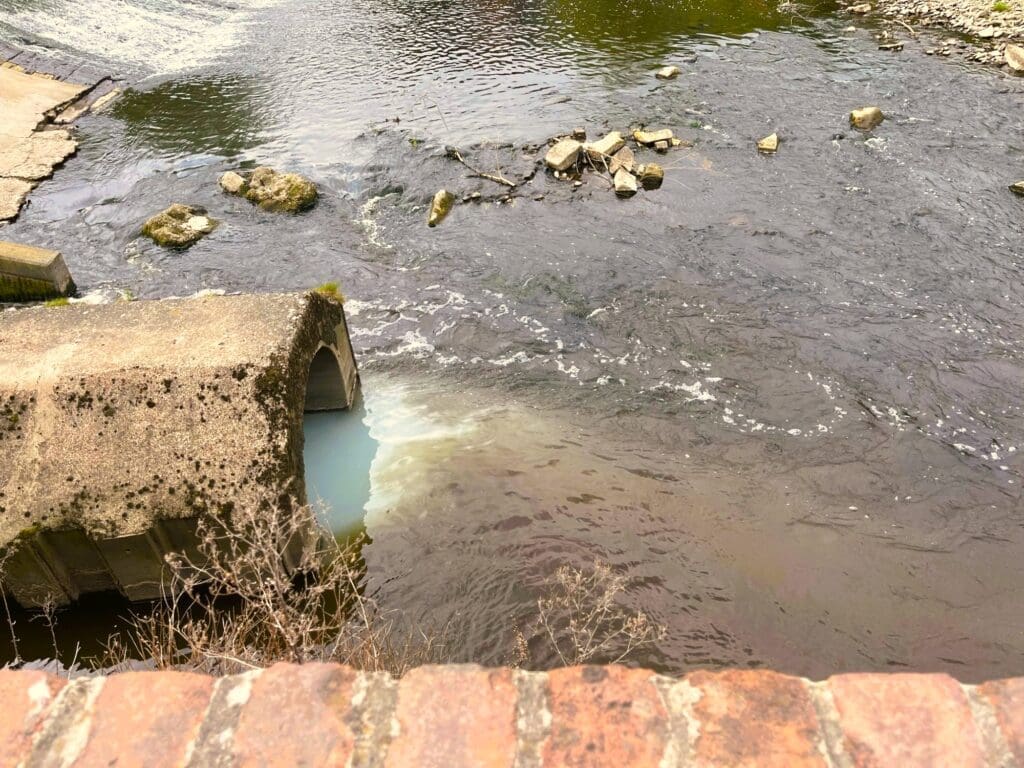Thousands of people around the UK and Ireland joined forces and became springtime citizen scientists for The River Trust’s biannual citizen science event, the Big River Watch. Lucy Wood tells us what we need to know:
THE River Trust has since been busy combing through the data and has now shared the results of the participants’ efforts, recorded between April 25 and May 1.
“This watch was particularly exciting for us as it marks two full years of Big River Watch surveys,” said a trust spokesperson.

“Together, an amazing 3909 people took part and submitted 2261 surveys. That adds up to 41 days of watching and recording observations of our precious waterways, from Stornoway in the Outer Hebrides to Dover on the English south coast.
“For us, this was a particularly exciting ‘watch’, as not only does it mark two full years of Big River Watch surveys, but we also teamed up with Earthwatch’s Great UK WaterBlitz to offer even more opportunities to gather river health data by measuring nitrates and phosphates in the water.
“Four-time Big River Watch champions, ducks once again take the podium spot for the most common wildlife sighting, being recorded in 1100 surveys. Second place goes to fish, with 636 recordings, followed by riverflies at 628. Close behind but not quite making the podium are the heron and swan, with 429 and 419 sightings respectively.” Beavers were spotted by 11 surveyors while 148 caught a glimpse of the stunning kingfisher.
“Your wildlife observations help shine a light on which species are thriving, where they’re being seen, and how river ecosystems are functioning. Beaver sightings are an exciting sign of ecological restoration, while riverflies are a key indicator of good water quality.
“Though many surveys recorded wildlife, which can be a good indicator for the health of our waterways, it’s clear that our rivers are still under pressure. More than half of all surveys (54%) recorded at least one form of pollution.
“Silt was the most frequently reported pollutant, with 547 sightings. Silt and soil often enter waterways after rainfall; restoring our soils, using cover crops, and installing nature-based solutions like buffer strips and riparian tree planting can help us keep soil, silt and nutrients on land.
“Livestock-related pollution came next, recorded in 343 surveys, a reminder of the impact of farm animals with direct access to riverbanks. Not only does this bring nutrient pollution, like nitrates and phosphates that can result in toxic algal blooms, but it can also introduce antibiotics and pathogens to river ecosystems, posing risks to both ecosystems and human health. Livestock presence on riverbanks can also damage vegetation and increase erosion, further degrading river habitats.
“Algal blooms were recorded in 250 surveys. These often suggest high levels of nutrients in the water, which can come from agricultural run-off or untreated sewage. They become more common in the summer months in response to warmer temperatures, prolonged daylight hours, and the washing of spring fertiliser nutrients from farmland with rain.
“Sewage pollution itself was reported 139 times (featuring in 6.14% of surveys), while sewage fungus, a stringy grey-brown growth that thrives in polluted conditions and can indicate sewage pollution taking place over a long period, was seen in 189.
“Other types of pollution were also noted. Road run-off, usually recognised by an oily or rainbow-like sheen on the water’s surface, was recorded in 89 surveys. Mine water, which can contain toxic metals and stain riverbeds, was reported in 50.
“Despite the high frequency of pollution and reports of litter (present in 50% of surveys), 70% of participants felt their river stretch looked healthy, while 22% said it looked unhealthy and 8% were unsure. At first glance, that sounds promising, but many of the biggest threats to our rivers are invisible to the naked eye. Chemical pollution, for example, affects all rivers in the UK and Ireland, but can’t be detected without lab testing.
“Plus, participants are more likely to head out in dry and sunny weather, when signs of pollution like sewage or litter may be less visible. These often become more noticeable after rainfall when overflows and run-off wash them into rivers.
“As with previous Big River Watch events, we asked participants to summarise how they felt during their river visit using a single word. These one-word responses are one of our favourite elements of the survey to explore and revealed a clear emotional connection to river health. People who thought their river looked healthy most often described feeling calm, peaceful, or happy. Whereas those who felt their river looked unhealthy were more likely to say they felt sad, concerned, or frustrated.
“These emotional responses remind us that the condition of our rivers isn’t just about nature, it directly affects our mental well-being and our relationship with the places we live. Clean, thriving rivers, full of nature, bring us peace and help foster a sense of pride in our local area. Polluted waterways, on the other hand, bring worry, frustration, and a sense of loss. Restoring our rivers doesn’t just benefit the environment, it helps improve the well-being of our communities, too.
“Big River Watch offers a chance to reconnect with well-known and loved river spots, or to explore somewhere new. This time, 181 surveys were conducted at brand-new locations, but more than 700 surveys took place at locations that participants reported to visit at least every week.
“This tells us something important – our rivers need more champions, and this personal connection helps build care and stewardship for our waterways.”The next Big River Watch will take place in September. To find out more about The Rivers Trust and what you can do to help our rivers, visit https://theriverstrust.org



